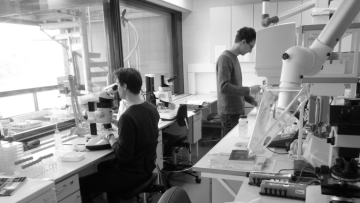Salinity effects on egg production, hatching, and survival of Eurytemora affinis

Salinity effects on egg production, hatching, and survival of Eurytemora affinis (Copepoda, Calanoida) has been published in Crustaceana Volume 93, Issue 3-5 and can be found with this DOI https://doi.org/10.1163/15685403-00003988
Abstract
Salinity is an important biodiversity regulating factor in the Baltic Sea, forming a physiological dispersal barrier for species. The salinity in the Baltic Sea has been predicted to decline due to increased precipitation and fewer saline water inflows from the ocean. This causes stress to species already living on the edge of their tolerances and can alter species compositions and interactions in ecosystems. Calanoid copepod resting eggs, originating from a known egg bank on the seabed in the western Gulf of Finland, were incubated in the laboratory. We monitored the hatching of the calanoid copepods Acartia sp. and Eurytemora affinis, as well as the survival to maturity of hatched Eurytemora affinis nauplii in salinities ranging from 0 to 25. Further, we also investigated salinity-related effects on body size and egg production. Based on the results of our generalized linear mixed model, peak hatching occurred within the salinity range 5-20 (6.3 at the study site). Body size was not affected by salinity and most eggs were produced in salinities of 5, 7.5 and 15. The results suggest that E. affinis lives on the edge of an optimal salinity and that a decline of salinity could affect the fitness of the local populations of the species.
Photo: Jonna Engström-Öst